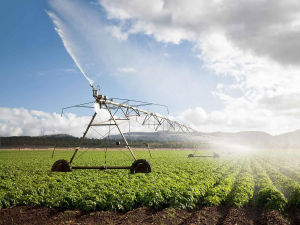Roadmap set to double hort exports by 2035
It's critical that the horticulture sector works together as part of a goal to double the sector’s exports by 2035.
 Water allocation and storage has been a hot topic of discussion during HortNZ’s recent grower meetings.
Water allocation and storage has been a hot topic of discussion during HortNZ’s recent grower meetings.
Water allocation and storage has been a hot topic of discussion during HortNZ’s grower meetings held recently around the country.
Growers are dealing with the implications of the El Nino weather pattern now prevailing over New Zealand, which means drier conditions for many regions, says HortNZ chief executive Nadine Tunley.
“This is why ensuring water resilience through availability and storage is a key priority in the Aotearoa Horticulture Action Plan (AHAP) and why we need policies to support the expansion of, and investment in, water storage,” she says.
“This focus area in AHAP calls for strategic, evidence-based co-investment in regional water storage for climate change adaptation. We know horticulture is a very efficient user of water but needs a higher degree of reliability than other land uses.
“Unfortunately, when a first-in-served approach is used to allocate the volume of water allowed to be taken from rivers, and an ecosystem health approach is used to set the minimum flow, horticulture gets caught with the most significant impacts due to the importance of water reliability for fruit and vegetable quality,” says Tunley.
In their discussions with the new Government, HortNZ have been clear that investment in land and water is critical if country is to maintain a thriving horticulture sector.
“We cannot grow without the use of New Zealand’s highly productive land. We cannot grow without access to water,” says Tunley.
“Current policy settings and attitudes – particularly in the areas of land and water use – do not support horticulture’s growth so it has been encouraging to see the new Government’s commitment to exploring water storage solutions.
“In addition to prioritising water allocation and developing policy settings that support the expansion of and investment in water storage, we also need to ensure that water consent timeframes give growers the certainty to invest and increase production, while improving environmental outcomes. That’s why we will be continuing to push the case for growers with Government in the freshwater settings space.”
Tunley says over the past few weeks, she has heard the message loud and clear- growers want reliable access to water and discharges and policy setting and investment that enable water storage so horticulture can expand in a way that supports freshwater health.
The grower meetings also discussed climate change and adaption and food security and supply.
Third-generation Ashburton dairy farmers TJ and Mark Stewart are no strangers to adapting and evolving.
When American retail giant Cosco came to audit Open Country Dairy’s new butter plant at the Waharoa site and give the green light to supply their American stores, they allowed themselves a week for the exercise.
Fonterra chair Peter McBride says the divestment of Mainland Group is their last significant asset sale and signals the end of structural changes.
Thirty years ago, as a young sharemilker, former Waikato farmer Snow Chubb realised he was bucking a trend when he started planting trees to provide shade for his cows, but he knew the animals would appreciate what he was doing.
Virtual fencing and herding systems supplier, Halter is welcoming a decision by the Victorian Government to allow farmers in the state to use the technology.
DairyNZ’s latest Econ Tracker update shows most farms will still finish the season in a positive position, although the gap has narrowed compared with early season expectations.

OPINION: Your old mate welcomes the proposed changes to local government but notes it drew responses that ranged from the reasonable…
OPINION: A press release from the oxygen thieves running the hot air symposium on climate change, known as COP30, grabbed your…